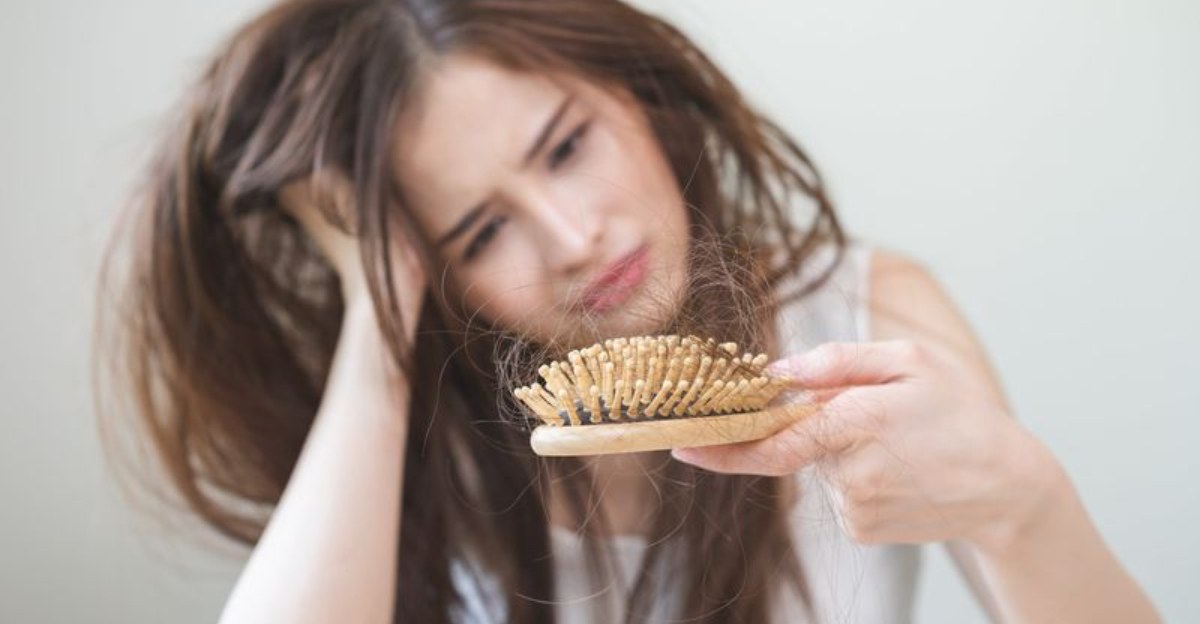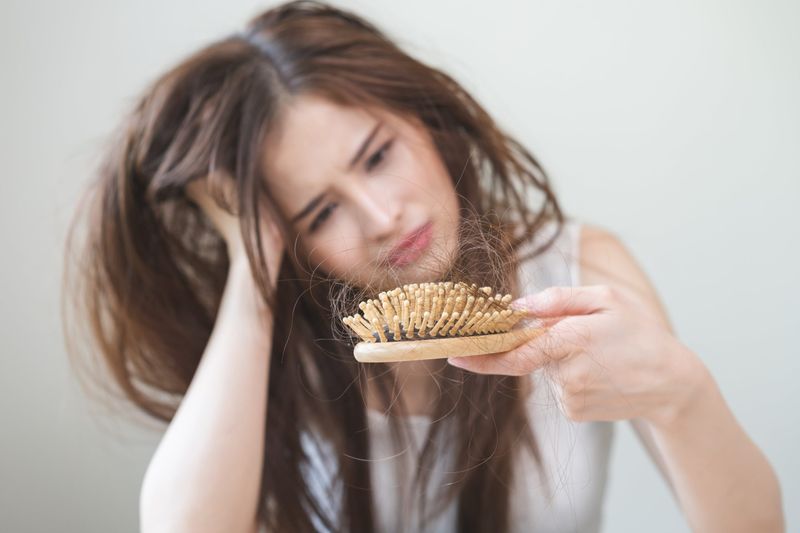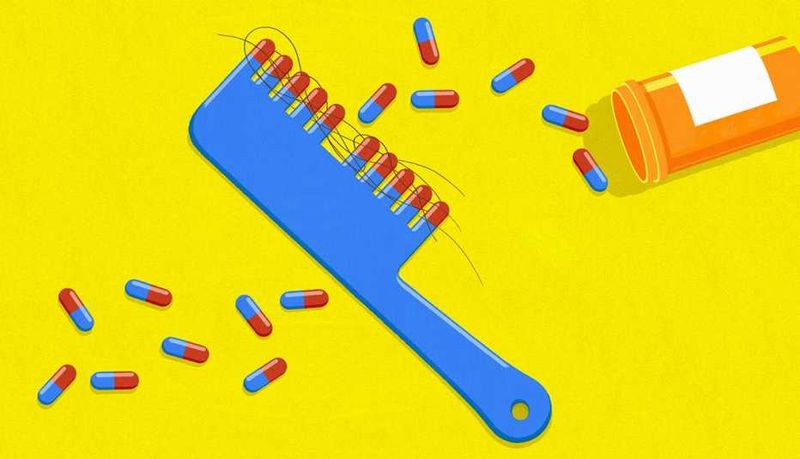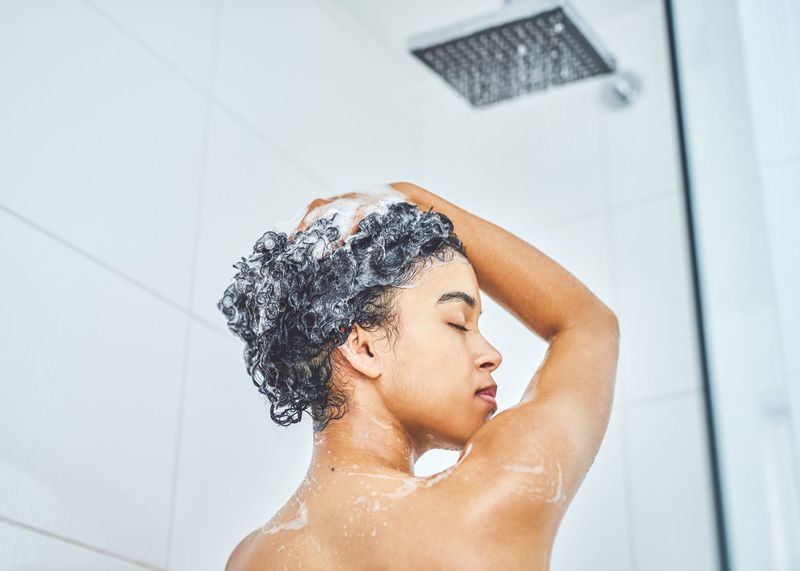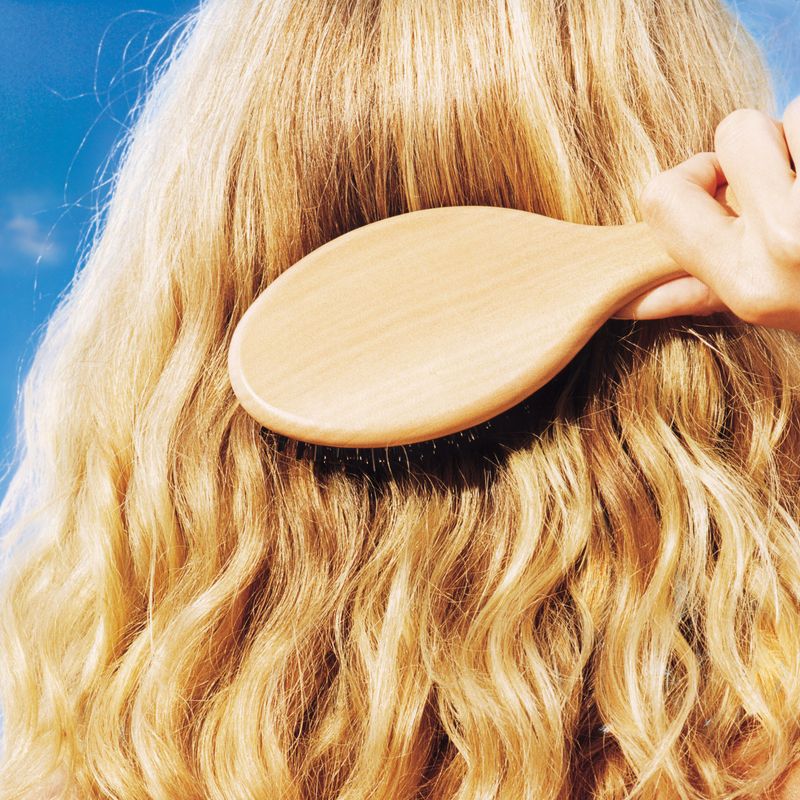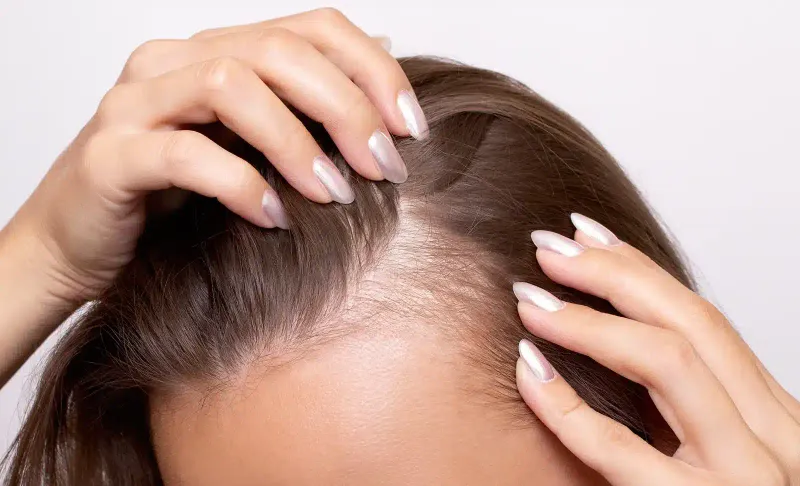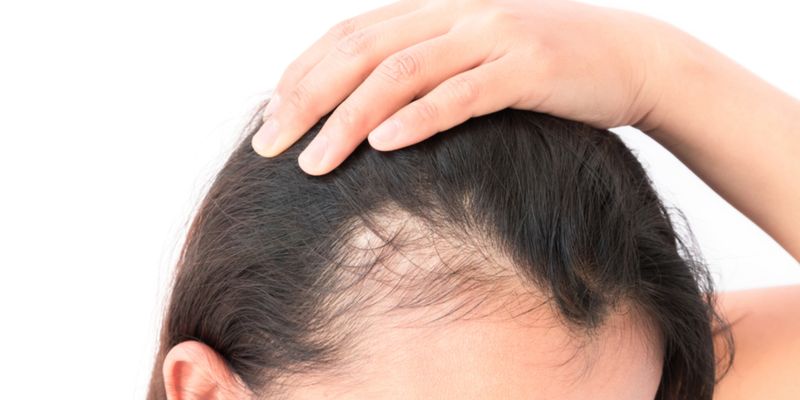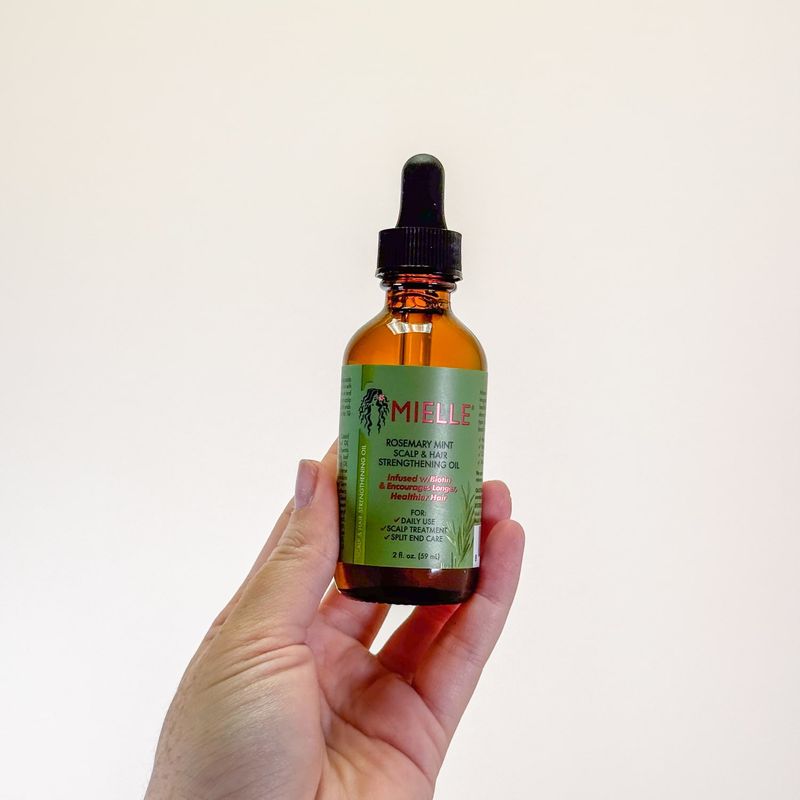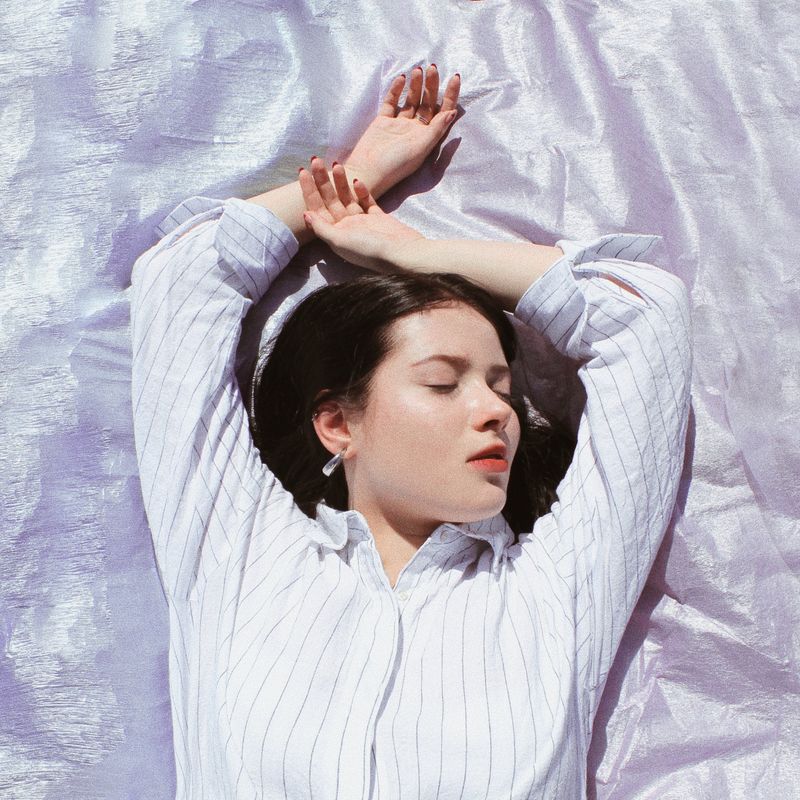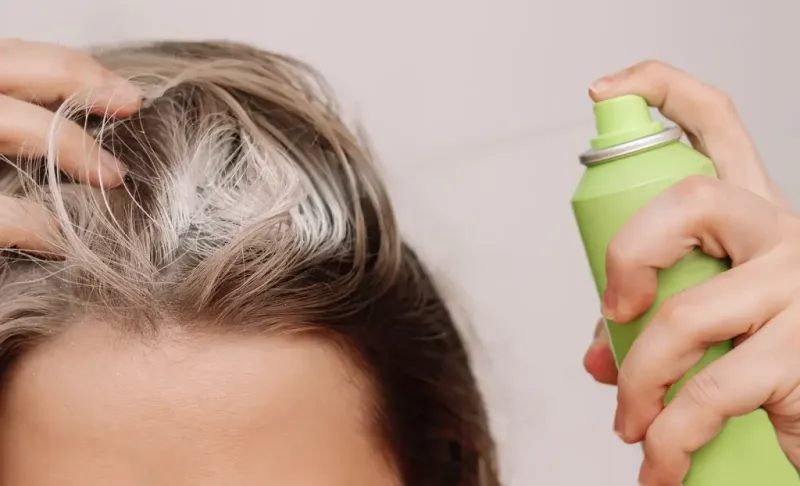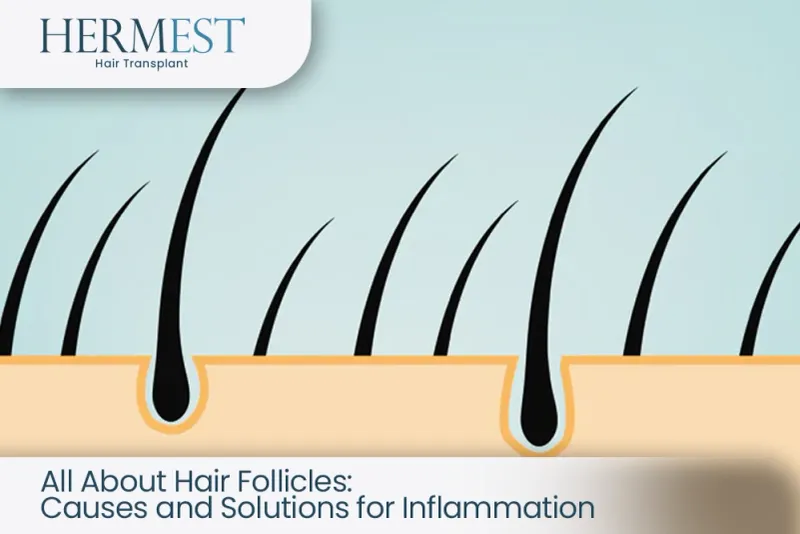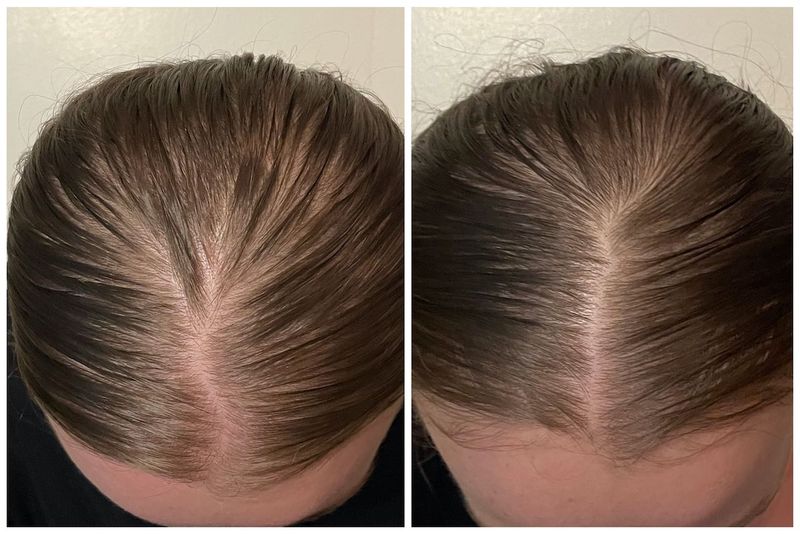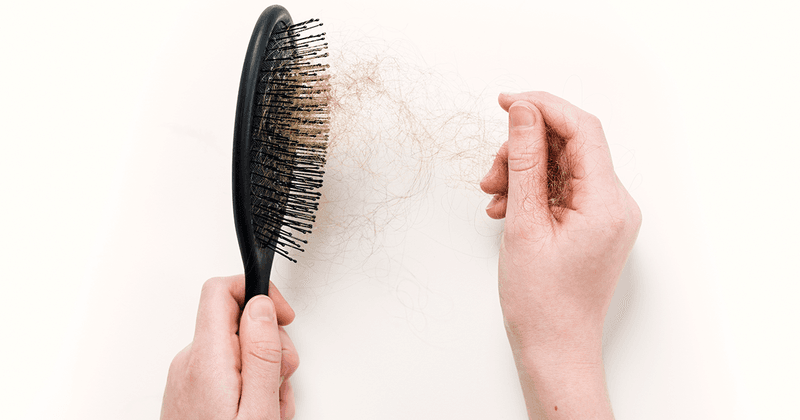Hair loss can feel like a lonely journey with confusing advice at every turn. Whether you’re noticing thinning patches or watching strands circle your shower drain, understanding what’s really happening matters. Let’s uncover the truths about hair loss that nobody mentions and discover practical steps you can take right now.
1. Stress Isn’t Just In Your Head
Your body responds to stress by shifting hair follicles into their resting phase. This survival mechanism redirects energy to more vital functions.
Combat this with meditation, adequate sleep, and gentle scalp massages to improve blood flow and relaxation.
2. Medications Hide Hair-Harming Secrets
Common prescriptions like blood pressure meds, antidepressants, and acne treatments can trigger shedding as a side effect.
Talk to your doctor about alternatives rather than stopping medications abruptly. Nutritional support may help minimize these effects.
Related: -7 Straight-Hair Problems No One Talks About And 8 Easy Fixes That Shine
3. Your Ponytail Is Pulling A Fast One
Tight hairstyles create constant tension called traction alopecia, which damages follicles permanently over time.
Rotate looser styles, use fabric hair ties, and give your hairline regular breaks from any pulling to prevent irreversible loss.
4. Hot Tools Burn More Than Just Time
Excessive heat styling doesn’t just damage strands—it weakens the scalp’s moisture barrier and can permanently harm follicles.
Embrace heat-free styling methods three days weekly. When using hot tools, never skip heat protectant and keep temperatures below 350°F.
5. Your Shower Routine Might Be The Culprit
Scalding water strips natural oils while harsh shampoos disrupt your scalp’s delicate microbiome, creating inflammation that chokes follicles.
Switch to lukewarm rinses and sulfate-free, pH-balanced cleansers designed for your specific scalp condition.
6. Seasonal Shedding Is Actually Normal
Humans naturally lose more hair during late fall and early spring transitions. This evolutionary pattern mimics animals’ coat changes.
Don’t panic during these phases—document your shedding patterns over a year to distinguish normal cycles from problematic loss.
7. Your Diet Is Missing Hair Heroes
Hair requires specific nutrients like biotin, zinc, iron, and protein to grow. Modern processed diets often lack these building blocks.
Add eggs, salmon, leafy greens, nuts, and berries to your meals. Consider blood tests to identify specific deficiencies.
8. Your Hormones Are Secret Saboteurs
Thyroid imbalances, PCOS, and perimenopause trigger significant shedding long before other symptoms appear.
Request comprehensive hormone panels beyond basic blood work. Catching imbalances early allows for interventions that can preserve your hair.
9. Genetics Load The Gun, Lifestyle Pulls The Trigger
Having the hair loss gene doesn’t guarantee thinning—environmental factors determine when and if genes activate.
Even with family history, proactive scalp care, stress management, and anti-inflammatory diets can delay or minimize genetically-programmed loss.
10. Crash Diets Crash Your Hair Cycle Too
Rapid weight loss shocks your body, triggering telogen effluvium—massive shedding that appears months after dieting begins.
Opt for gradual weight changes of 1-2 pounds weekly. Supplement with collagen and protein to minimize the impact on hair growth.
11. Most Hair Growth Products Target Symptoms, Not Causes
Commercial products typically focus on cosmetic improvements rather than addressing underlying triggers like inflammation or circulation issues.
Research ingredients, not marketing claims. Look for clinically-proven actives like minoxidil, ketoconazole, and peptides with published research backing them.
12. Scalp Sunburns Scar Your Follicles
UV damage doesn’t just cause skin cancer—it permanently damages hair follicle stem cells, especially along your part and thinning areas.
Apply SPF formulated for scalps daily, even on cloudy days. Wear hats with UPF protection during peak sun hours.
13. Hair Grows In Mysterious Cycles
Each follicle operates on its own 3-7 year growth cycle, independent of neighboring hairs. This explains why treatments take months to show results.
Be patient with interventions—visible improvements require at least 3 months as new growth cycles activate.
14. Your Pillowcase Is A Secret Hair Thief
Cotton pillowcases create friction that breaks hair and absorbs moisture from strands while you sleep.
Switch to silk or satin pillowcases that allow hair to glide smoothly. Bonus: they prevent sleep creases on your face too!
15. Dry Shampoo Buildup Suffocates Follicles
Frequent dry shampoo use creates scalp buildup that clogs follicles and prevents normal shedding, leading to inflammation.
Limit dry shampoo to once weekly and use clarifying treatments monthly to remove residue that can suffocate new growth.
16. Your Brush Material Makes A Massive Difference
Plastic brushes create static and snag hair, while metal brushes conduct heat that damages strands during blow-drying.
Invest in natural boar bristle brushes that distribute scalp oils and stimulate circulation without creating damaging friction or static.
17. Over-Washing Triggers Overproduction
Daily shampooing strips natural oils, triggering your scalp to overproduce sebum, creating an oily-yet-dry imbalance that weakens roots.
Train your scalp by gradually extending time between washes. Use lightweight conditioners only on ends to prevent weighing down roots.
18. Blood Flow Is Hair Growth’s Best Friend
Follicles require robust circulation to receive nutrients and oxygen. Sedentary lifestyles reduce scalp blood flow dramatically.
Invert your head for two minutes daily, practice scalp massage, and exercise regularly to increase circulation to follicles.
19. Inflammation Is The Hidden Hair Killer
Chronic inflammation from diet, stress, or scalp conditions silently damages follicles long before visible thinning occurs.
Reduce inflammatory foods like sugar, alcohol, and processed carbs. Add turmeric, omega-3s, and antioxidant-rich foods to your diet.
20. Minoxidil Works—But Timing Is Everything
Minoxidil is most effective when started at the first signs of thinning rather than after significant loss has occurred.
Begin treatment when you notice increased shedding or widening part lines. Consistency matters—results require twice-daily application for at least 4 months.
21. Your Hair Loss Might Actually Be Breakage
What looks like shedding could actually be strands snapping mid-shaft due to chemical damage, creating the appearance of thinning.
Examine fallen hairs—roots attached mean true shedding; no bulb means breakage. Address with protein treatments and reduced chemical processing.

